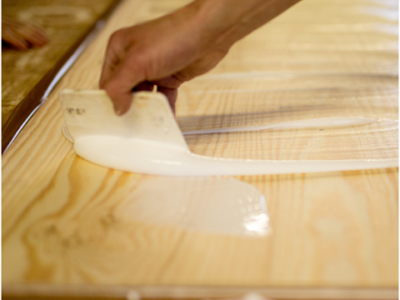Organic solvent nanofiltration membranes are critical components in various industrial processes, offering efficient separation and purification of solvents. However, misconceptions about OSN membrane materials abound, leading to confusion and misinformation. In this article, we debunk eight common myths surrounding organic solvent nanofiltration membrane materials, providing accurate information to help you make informed decisions for your filtration needs.
Myth 1: All Membrane Materials are Created Equal
One of the prevailing myths about OSN membrane materials is that they are all the same. In reality, OSN membranes can be fabricated from a variety of materials, including polymers, ceramics, and composites, each with its unique properties and performance characteristics. It’s essential to select the appropriate membrane material based on factors such as solvent compatibility, chemical resistance, and separation efficiency to ensure optimal filtration performance.
Myth 2: OSN Membranes Are Only Suitable for Certain Solvents
Another common misconception is that OSN membranes are only compatible with specific organic solvents. While it’s true that some membranes may exhibit better performance in certain solvents than others, advancements in membrane technology have expanded the range of solvents that can be effectively filtered using OSN membranes. By selecting the right membrane material and configuration, OSN membranes can be tailored to meet the filtration requirements of a wide range of organic solvents.
Myth 3: OSN Membranes Are Prone to Chemical Degradation
There is a misconception that OSN membranes are highly susceptible to chemical degradation when exposed to organic solvents. While it’s true that certain materials may be more vulnerable to chemical attack than others, many OSN membranes are engineered to withstand exposure to a variety of organic solvents without significant degradation. Proper material selection, including the use of chemically resistant polymers or surface modifications, can enhance membrane durability and longevity in harsh chemical environments.
Myth 4: Only Polymeric Membranes Are Used in OSN
While polymeric membranes are commonly used in OSN applications due to their flexibility, tunability, and cost-effectiveness, they are not the only option available. Ceramic membranes, known for their high temperature and chemical resistance, are also used in certain OSN processes, particularly in applications involving aggressive solvents or elevated operating conditions. Additionally, composite membranes combining the benefits of different materials may offer enhanced performance in specific OSN applications.
Myth 5: OSN Membranes Have Limited Selectivity
Some believe that OSN membranes have limited selectivity and are only capable of separating solvents based on size. However, OSN membranes can exhibit molecular-level selectivity, allowing for the precise separation of solutes based on their chemical properties, charge, and interactions with the membrane surface. By controlling pore size, surface chemistry, and membrane structure, OSN membranes can achieve high selectivity while maintaining high permeability and flux rates.
Myth 6: OSN Membranes Are Difficult to Fabricate
Another misconception is that OSN membranes are challenging to fabricate, requiring complex manufacturing processes. While it’s true that membrane fabrication can be a precise and intricate process, advancements in fabrication techniques, such as phase inversion, electrospinning, and layer-by-layer assembly, have made it easier to produce high-quality OSN membranes with precise pore sizes and uniform properties.
Myth 7: OSN Membranes Are Expensive
There is a misconception that OSN membranes are prohibitively expensive, making them inaccessible to many industries. While it’s true that some specialised membranes may command higher prices, the overall cost of OSN membranes has decreased over time as manufacturing processes have become more efficient and materials more readily available.

Myth 8: OSN Membranes Require Complex Maintenance
Finally, there is a misconception that OSN membranes require complex maintenance procedures to ensure optimal performance. While regular maintenance is essential for preserving membrane integrity and preventing fouling, it doesn’t have to be overly complicated. Simple cleaning protocols, such as backwashing or chemical cleaning, can effectively remove fouling deposits and restore membrane performance.
Debunking these myths about organic solvent nanofiltration membrane materials is essential for promoting a better understanding of their capabilities and potential applications. By dispelling misconceptions and providing accurate information, we can empower industries to make informed decisions when selecting and utilising OSN membranes for their filtration needs.
To explore the benefits of organic solvent nanofiltration membranes for your industrial filtration needs, contact SepPure today.














Comments